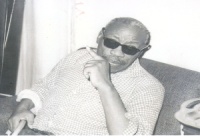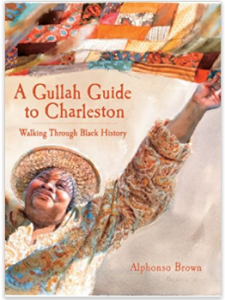Did you know that……..slaves were never sold from the Market Place? The property was given to Charleston by the prominent, Pinckney family for a city market, with the stipulation that the property reverts to any living heirs if used for any other purpose. Did you know that….…
 the dance, “the Charleston” was started in a small nightclub in Harlem? It came to stage in 1924 in James P. Johnson’s “Runnin’ Wild.” Herman Brown, from Charleston, frequented a nightclub where Johnson often performed. Brown was sometimes called upon to “do that crazy dance.” Once while on tour in New York, The Jenkins Orphanage Band had the honor of meeting Johnson and playing his “Charleston.” The boys taught Johnson some more of those “crazy dance steps” while performing his music. Upon returning to Charleston, the band members played the music on the streets of Charleston. The young white girls imitated the boys doing the dance, consequently making it the official dance of Charleston.
the dance, “the Charleston” was started in a small nightclub in Harlem? It came to stage in 1924 in James P. Johnson’s “Runnin’ Wild.” Herman Brown, from Charleston, frequented a nightclub where Johnson often performed. Brown was sometimes called upon to “do that crazy dance.” Once while on tour in New York, The Jenkins Orphanage Band had the honor of meeting Johnson and playing his “Charleston.” The boys taught Johnson some more of those “crazy dance steps” while performing his music. Upon returning to Charleston, the band members played the music on the streets of Charleston. The young white girls imitated the boys doing the dance, consequently making it the official dance of Charleston.
Did you know that……..
William Deas, a black man, created she-crab soup at 116 Broad Street while he was the butler for Robert Goodwyn Rhett, a former mayor of Charleston? William Deas was “Rhett’s butler.” <strong”>Did you know that……in 1868 the building at 91 Broad Street housed the first black law firm in America? It was the law firm of William Whipper (related to the late Rev. B. J. Whipper), Macon Allen, and Robert Brown Elliot. Elliot was a West Indian who was educated in Jamaica and at Eton College in England. He was also the editor of the oldest black newspaper in America, The Missionary Recorder, an A. M. E. Newspaper published by A. M. E. Bishop, Richard Cain.
Did you know that…..
many of Charleston’s black senior citizens pronounce Calhoun, “Kill-hoon?” When asked about this mispronunciation, they exclaimed, “Oh we can say “Calhoun,” we mean to “Kill-hoon!” Did you also know that John C. Calhoun is the great, great, grand uncle to Lena Horne? Again, did you know that the statue of John C. Calhoun,…. oops..”Kill-hoon,” was erected in 1886 by the Daughters of the Confederacy on a low base pedestal? At the unveiling, it was claimed to be “ghastly,” and demoralizing to women. The present statue, erected in 1896, was modified by another sculptor and placed on a high based pedestal. In the nine years of it being on a low base pedestal, blacks desecrated the statue almost beyond recognition. This action is what prompted the girls to raise it up on the high pedestal.
Did you know that……
Sanders Clyde Elementary School was named for early 20th century educator, Ellen Sanders and Florence “Birdie” Clyde? One of the first schools on the peninsula named in honor of black persons.
Did you know that……
Porgy (Sammy Smalls) lived the last few years of his life in Catfish row (Cabbage Row)? Bess (Maggie Barnes) lived on Romney Street. They may have frequented the area because blacks and whites lived together all over Charleston. Charleston has never had segregated houses or churches. If one were to do research on the civil rights movement in Charleston, there will be very little to write about; Charleston’s civil rights movement was very short lived.
Did you know that…..
the old slave mart at #6 Chalmers Street was opened in 1852 by Ryan and his son? They were referred to as “brokers. ” The building has changed somewhat from what it looked like then. Before it was made into two story housing units around 1879, it had a huge Iron Gate instead of the present glass front. When it was a slave mart, the Chalmers Street entrance was the back of the complex. The mart was approached from the Queen Street side. It was from the Queen Street side where one would find the office (entrance to the parking lot) and the courtyard which was 60 feet wide and 175 feet deep enclosed by a wall about 20 feet high. To the south of the courtyard, just behind #8 Chalmers, and a few rods east of the Huguenot Church was Ryan’s “nigger-jail”. The jail was a separate building, four stories high, with bars on the windows, and bolts and locks on all of the doors. The complex also contained a “dead house” (morgue) in the southwest corner of the yard. On the East Side of the yard a little behind the jail was the kitchen and upstairs slave/servants quarters. Before an auction the slaves were placed out in the courtyard for inspection before being auctioned off in the mart, which was originally 44 by 20 feet, not as long as it is now. The Barracoon, or nigger jail, is where the slaves were kept until auction time. The jail was also used for incarceration of runaways or other slave infractions. Between the years 1902 and 1922 the buildings, except for the mart, slowly disappeared.
Did you know that……
during slavery time, slave dealers referred to themselves as “brokers?” This tradition prompted brokers of other kind to describe themselves as insurance, stock, cotton, ship, or exchange brokers thus eliminating any suggestion of being associated with slavery.
Did you know that…..the site of #28 Inspection Street was the birthplace of Ernest Just? Dr. Just, was an internationally recognized Marine Biologist, a faculty member at Howard University, and one of the four founders of Omega Psi Phi Fraternity. His mother, Mary Just, taught school in the West Ashley area, which now bears her name, ” Maryville.” Just’s father was a wharf builder. His grandfather was a mulatto slave artisan who was one of 18 people who founded the Unity and Friendship Society in 1802. It was a benevolent organization.

